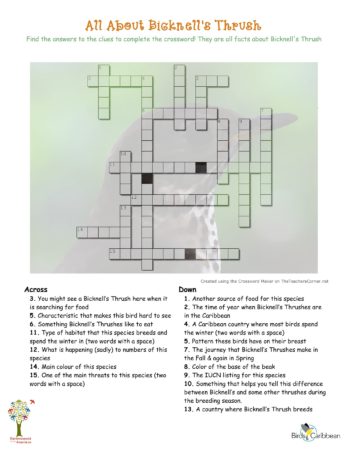Celebrate World Migratory Bird Day (WMBD) with us in our virtual “Birds Connect Our World” edition! Have fun learning about a new migratory bird every day. We have colouring pages, puzzles, activities, and more. Download for free and enjoy nature with your family at home.
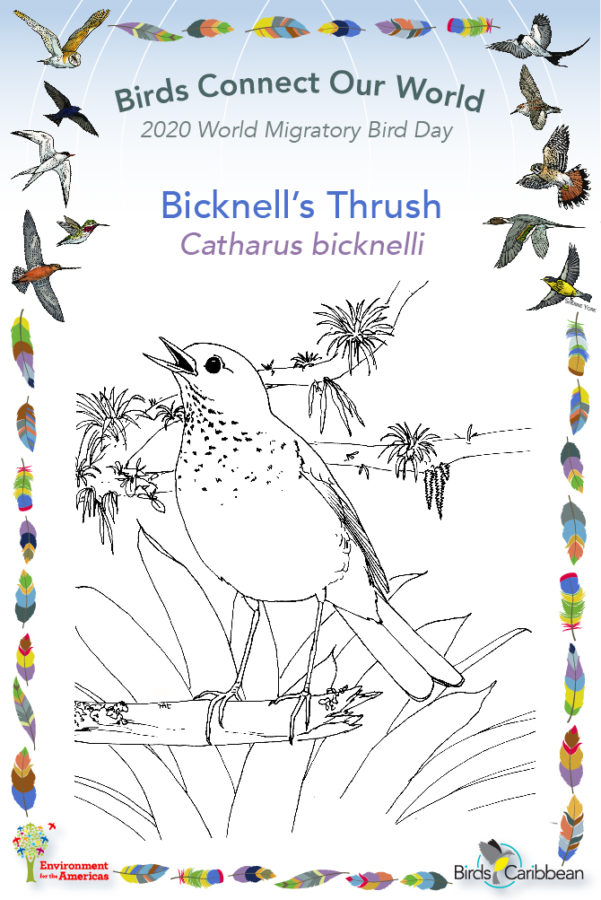
Migratory Bird of the Day: Bicknell’s Thrush
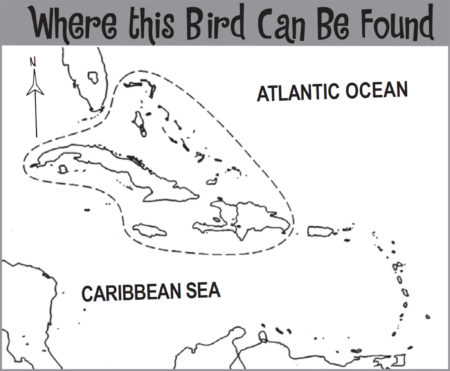
Bicknell’s Thrushes can be a challenge to encounter at any time of year because they live in remote mountain forest habitats and are shy. They are brownish-olive above with whitish underparts that are heavily spotted on the breast and sides. Their distinctive song, most often heard at dawn and dusk on the breeding grounds, descends in a nasal, gyrating spiral. Their call, given year-round, is a penetrating, downward slurred whistle peeert or beeer.
Bicknell’s Thrush breeds only in a few high-elevation coniferous forests of the northeastern US and southeastern Canada. They spend the winter on only four Greater Antillean islands – Hispaniola, Cuba, Jamaica, and Puerto Rico. Here they inhabit dense, moist broadleaf forests from sea level to over 2,000m. Most birds are restricted to remote mountainous areas. About 80-90% of the total population winters on Hispaniola, especially in the Dominican Republic. This makes Bicknell’s Thrush a range-restricted habitat specialist at both ends of its migration.
The Bicknell’s Thrush population is small and numbers are declining. Classified as Vulnerable by the IUCN, it is considered one of North America’s most at-risk breeding songbirds. Its forest breeding habitat is under siege from pollution, ski development, telecommunications tower and wind turbine construction, and global climate change. In the Caribbean, loss of the species’ preferred dense, humid broadleaf forests is occurring at unsustainable rates.
Habitat conservation is the key to ensuring the long-term survival of the Bicknell’s Thrush. In the Caribbean, especially on Hispaniola, this means conservation of moist forest habitats. We need to stop cutting down forests and restore them instead. We also need to strengthen enforcement of Protected Areas and employ sustainable agricultural practices. Despite daunting challenges, local conservation efforts are making progress. Learn more about this species, including its range, photos, and calls here.
Colour in the Bicknell’s Thrush!
Download the page from Migratory Birds of the West Indies Colouring Book. Use the photos below as your guide, or you can look up pictures of the bird online or in a bird field guide if you have one. Share your coloured-in page with us by posting it online and tagging us @BirdsCaribbean #WMBD2020Carib
Listen to the call of the Bicknell’s Thrush
The calls of the Bicknell’s Thrush their wintering grounds is a downward slurred “peeert” whistle
Puzzle of the Day
Click on the images below to do the puzzles. You can make the puzzle as easy or as hard as you like – for example, 6, 8, or 12 pieces for young children, all the way up to 1,024 pieces for those that are up for a challenge!
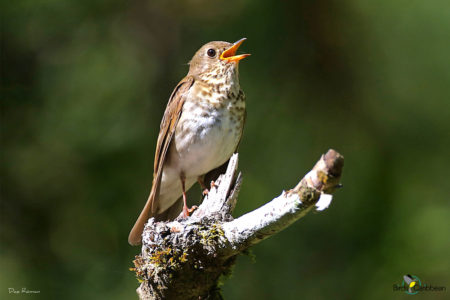
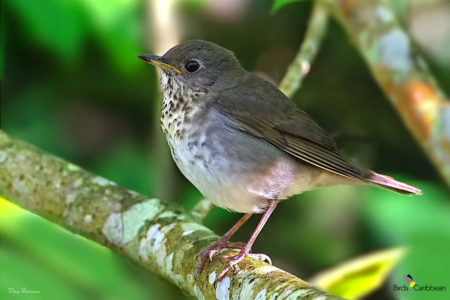
Activity of the Day
FOR KIDS: How much do you know about Bicknell’s Thrush? Test your knowledge with our crossword puzzle. You can find the information to answer the clues the text above, in the coloring book page or by looking at the pictures of Bicknell’s Thrush. And you can see the answers here.
FOR KIDS AND ADULTS:
- Take a walk and see if you can spot any migratory birds. Use a bird field guide or the FREE Merlin bird ID app to help you identify the birds you are seeing.
- Enjoy the videos below of a Bicknell’s Thrush in the wild! In the first video, shot in Blackcap Mountain in Maine, the bird is perched in a tree and you will hear it making its down-slurred peeeert whistle call. In the second video, shot in Vermont, a parent is returning to its nest to deliver insect food items to young chicks.
- Visit MigratoryBirdDay.org for many more free activities and resources to learn about migratory birds, their threats and conservation actions you can take.

